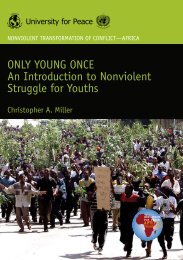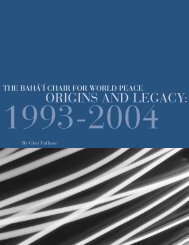who medicines strategy - libdoc.who.int - World Health Organization
who medicines strategy - libdoc.who.int - World Health Organization
who medicines strategy - libdoc.who.int - World Health Organization
Create successful ePaper yourself
Turn your PDF publications into a flip-book with our unique Google optimized e-Paper software.
WHO MEDICINES STRATEGY 2004-2007 | 14Figure 2: Estimated global share ofpharmaceutical consumption (by value) in low-,middle-, and high-income countriesEssential <strong>medicines</strong> also have a huge economicimpact on countries and on households. Indeveloping countries today, because of highprices, <strong>medicines</strong> account for 25%-70% oftotal health care expenditures, compared toless than 15% in most high-income countries.For governments and NGOs providing primaryhealth care, <strong>medicines</strong> are the largest expenseafter personnel costs. For households in lowincomecountries, <strong>medicines</strong> represent 50%-90%of out-of-pocket spending on health. Yet in somecountries, less than half of people living in poorhouseholds receive all the <strong>medicines</strong> they needfor acute illness – and one-third receive none ofthe <strong>medicines</strong> they need. Source: <strong>World</strong> Medicines Situation,WHO (forthcoming).Despite considerable progress in access toessential <strong>medicines</strong> over the last 25 years, anestimated 1.7 billion people today still have noregular access to quality essential <strong>medicines</strong>.While this is a smaller percentage of the globalpopulation than in 1977, when the first WHOModel List of essential <strong>medicines</strong> was published,gross inequity in access to <strong>medicines</strong> remains theoverriding feature of the world pharmaceuticalsituation.From 1985 to 1999, the global share ofpharmaceuticals production and consumption











